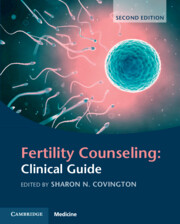Book contents
- Fertility Counseling: Clinical Guide
- Fertility Counseling: Clinical Guide
- Copyright page
- Dedication
- Contents
- Preface
- Contributors
- I Introduction
- II Therapeutic Approaches
- III Third Party Reproduction: Assessment and Preparation
- Chapter 9 Counseling Recipients of Nonidentified Donor Gametes
- Chapter 10 Counseling Nonidentified Gamete Donors
- Chapter 11 Counseling Embryo Donors and Recipients
- Chapter 12 Special Considerations in Gestational Surrogacy Assessments and Arrangements
- Chapter 13 DNA and the End of Anonymity: Disclosure, Donor-Linkage and Fertility Counseling
- Chapter 14 Family Life after Donor Conception
- IV Addressing the Needs of Diverse Populations
- V Special Topics in Fertility Counseling
- VI Practice Issues
- The International Glossary on Infertility and Fertility Care, 2017
- Index
- References
Chapter 14 - Family Life after Donor Conception
from III - Third Party Reproduction: Assessment and Preparation
Published online by Cambridge University Press: 24 November 2022
- Fertility Counseling: Clinical Guide
- Fertility Counseling: Clinical Guide
- Copyright page
- Dedication
- Contents
- Preface
- Contributors
- I Introduction
- II Therapeutic Approaches
- III Third Party Reproduction: Assessment and Preparation
- Chapter 9 Counseling Recipients of Nonidentified Donor Gametes
- Chapter 10 Counseling Nonidentified Gamete Donors
- Chapter 11 Counseling Embryo Donors and Recipients
- Chapter 12 Special Considerations in Gestational Surrogacy Assessments and Arrangements
- Chapter 13 DNA and the End of Anonymity: Disclosure, Donor-Linkage and Fertility Counseling
- Chapter 14 Family Life after Donor Conception
- IV Addressing the Needs of Diverse Populations
- V Special Topics in Fertility Counseling
- VI Practice Issues
- The International Glossary on Infertility and Fertility Care, 2017
- Index
- References
Summary
For many years, donor conception treatment was seen as a “solution” to involuntary childlessness, marked by pregnancy. Through awareness-raising by mental health professionals and especially donor-conceived people themselves, it is now increasingly recognized as the start of a family-building process with an ongoing story that unfolds over the family life-span and beyond. This chapter shows how parents’ abilities to adjust their prior beliefs about the meaning of “family” and “genetic relationships” become critical in the shift from “building a family” to “being a family” and onwards. Moreover, they are not alone anymore: various story-tellers in the new family system, including children, grandparents and others, each have their own unfolding understandings to voice and manage, separately and together. Throughout this creative and challenging process, the donor(s) has a presence, regardless of whether all are aware of their involvement. The complexity of disclosure is considered alongside the need for openness itself to be ongoing and interactive if it is to healthily accommodate shifts in understanding and power balances as children grow. Families do not exist in a vacuum, so wider networks and societal developments can also influence the permeability of their boundaries. Finally, the role of professional and peer support is considered.
Keywords
- Type
- Chapter
- Information
- Fertility Counseling: Clinical Guide , pp. 144 - 152Publisher: Cambridge University PressPrint publication year: 2022



